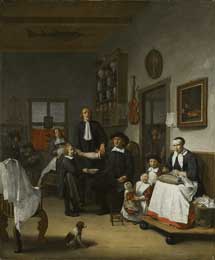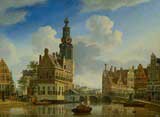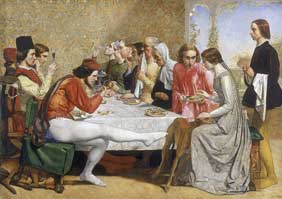
Amsterdams Historisch Museum
Exhibition: Old Masters of Amsterdam
6 March–9 August 2009 Amsterdams Historisch Museum (AHM) (Amsterdam Historical Museum)
Old Masters of Amsterdam tells the fascinating story of the formation and growth of the rich collection of paintings owned by the city of Amsterdam. The leading art historian Arthur Wheelock wrote of the museum that it has “a fascinating collection, containing all sorts of paintings not to be found elsewhere.” The exhibition The visitor wanders in and suddenly steps into a great militia hall, the place where the civic guard gathered for meetings, parties and to impress invited friends and guests. On the wall are the large canvases on which are depicted generations of militia: proud and self-assured, the pillars of civic society. On the table is the chain of the ‘king of the guild’ and the drinking horn: richly decorated symbols that are also depicted on the paintings on the wall.

In the exhibition Old Masters of Amsterdam
Amsterdams Historisch Museum (AHM) (Amsterdam Historical Museum)
Old Masters of Amsterdam
6 maart t/m 9 augustus 2009
Met ruim 1000 schilderijen van vóór 1800 beschikt de stad Amsterdam over één van de rijkste verzamelingen Oude Meesters ter wereld. Tot de hoogtepunten in de tentoonstelling behoren schilderijen van bekende en zeker ook minder bekende namen als Rembrandt, Jacob van Ruisdael, Jan van der Heyden en Willem van de Velde. De tentoonstelling vertelt het fascinerende verhaal van de totstandkoming en groei van deze rijke collectie. In de eerste zalen proeft de bezoeker de sfeer van de grote zaal in de schuttersdoelen en van de regentenkamer van het Leprozenhuis. Hier hingen oorspronkelijk de imposante groepsportretten, die bedoeld waren om indruk te maken op de bezoekers.
Filed under: Art | Tagged: AHM, Amsterdams Historisch Museum, Old Masters of Amsterdam | Leave a comment »





